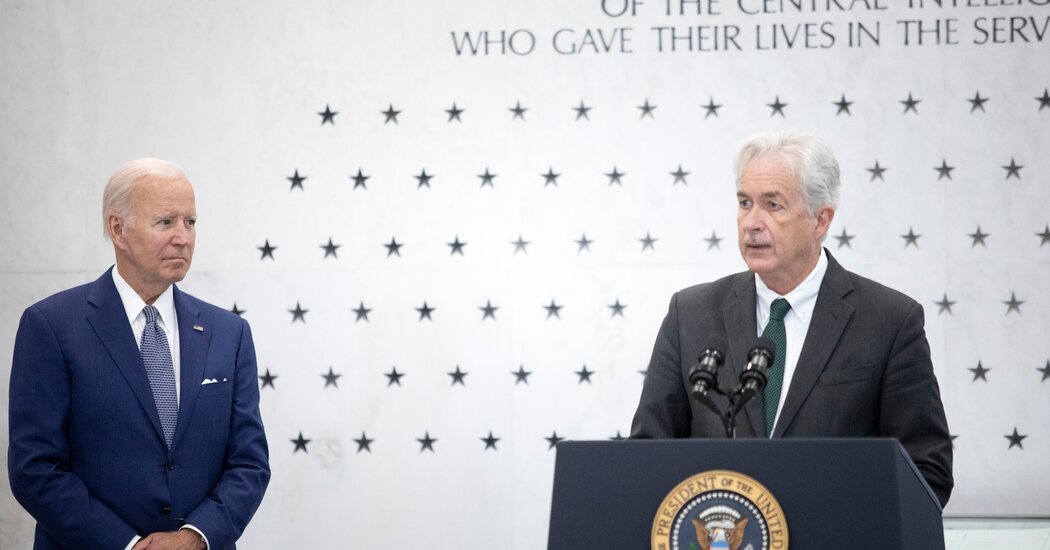
The C.I.A. director, William J. Burns, issued a warning to the agency’s work force last week after what appeared to be a noose was found outside a secret facility used by the agency in Virginia, according to people familiar with the matter.
In the message, Mr. Burns said that racism and racist symbols would not be tolerated in the agency.
Questions surround the incident. The object was found near a small agency facility located in a building that houses businesses and other organizations. Some people briefed on the incident said it was not entirely clear that the object was even meant to be a noose, or if whoever placed it there knew that the C.I.A. secretly operated in the building.
The incident did not occur at the C.I.A. headquarters in Langley, Va., which is closely guarded. The people familiar with the incident would not identify the location of the secret facility where the object was found.
People interviewed for this article spoke on the condition of anonymity to discuss internal C.I.A. communications and an ongoing investigation.
The C.I.A. does not currently have evidence suggesting that an agency employee left the item, or that a foreign intelligence service was involved, according to some of those people briefed on the incident.
Still, the object was disturbing enough that an agency official reported it, prompting the investigation and Mr. Burns’s note.
“C.I.A. has zero tolerance for actions or symbols of hatred and treats any such incidents with the utmost seriousness,” said Susan Miller, a spokeswoman for the agency, who declined to comment further on Mr. Burns’s message. “Our values and our vital national security mission demand that we uphold nothing less than the highest standards of inclusiveness and safety.”
The C.I.A. has been working to diversify in recent years. During the Obama administration, John O. Brennan, then the director, made public a company diversity report and stepped-up recruiting at historically Black colleges and universities. Gina Haspel, the director during the Trump administration, started an advertising campaign meant to help diversify the agency.
Last year, Fox News and other conservative news outlets began attacking the agency for what they called its woke recruiting videos.
A report on diversity released by the Office of the Director of National Intelligence last year found that 12.3 percent of civilian employees in the various intelligence agencies were Black. Overall, the percentage of minorities increased between 2019 and 2020, according to the report, but at the most senior pay levels, Black representation was far lower, making up just 6.5 percent of the ranks.
Former C.I.A. officials said that Mr. Burns had made efforts to give Black employees prominent roles in senior jobs, but work is left to be done.
Darrell Blocker, a former senior C.I.A. official who worked at the agency for nearly 30 years, commended the agency’s recent diversity efforts. Nevertheless, as with anywhere else, racism can be found at the agency, he said.
“The C.I.A. is a microcosm of the populace from which it draws its work force, so it should not surprise anyone who understands the deep-seated racism that has permeated all institutions throughout our history,” said Mr. Blocker, who is Black.
Mr. Blocker praised the C.I.A. officer who reported seeing the noose, saying it was vital for employees to report possible racial incidents so they can be investigated and addressed.
While most of what goes on in the C.I.A. remains shrouded in secrecy, some hate incidents have come to light. In 2015, a C.I.A. paramilitary contractor who is gay spoke to ABC News about a pattern of harassment by his teammates.
Preston Golson, a former C.I.A. analyst who also worked on initiatives to diversify the organization, said that while Black employees at the agency experienced the same unconscious bias that is present in every American workplace, he had not seen signs of overt racial hate.
“I never experienced anything like that in my almost 17 years there,” said Mr. Golson, who is Black. “There is always the typical things African Americans experience in any workplace, whether it is microaggressions or not being able to express your full self culturally. But it is nothing out of the ordinary from any organization in America.”
Mr. Golson, who is now a director at the Brunswick Group, an advisory firm, said the agency must still work on diversifying its leadership, as well as some of its most central jobs, including in operations and analysis.
“We need more representation in the traditionally higher-profile positions, jobs in analysis, operations,” Mr. Golson said. “But there have been some strides there too.”




